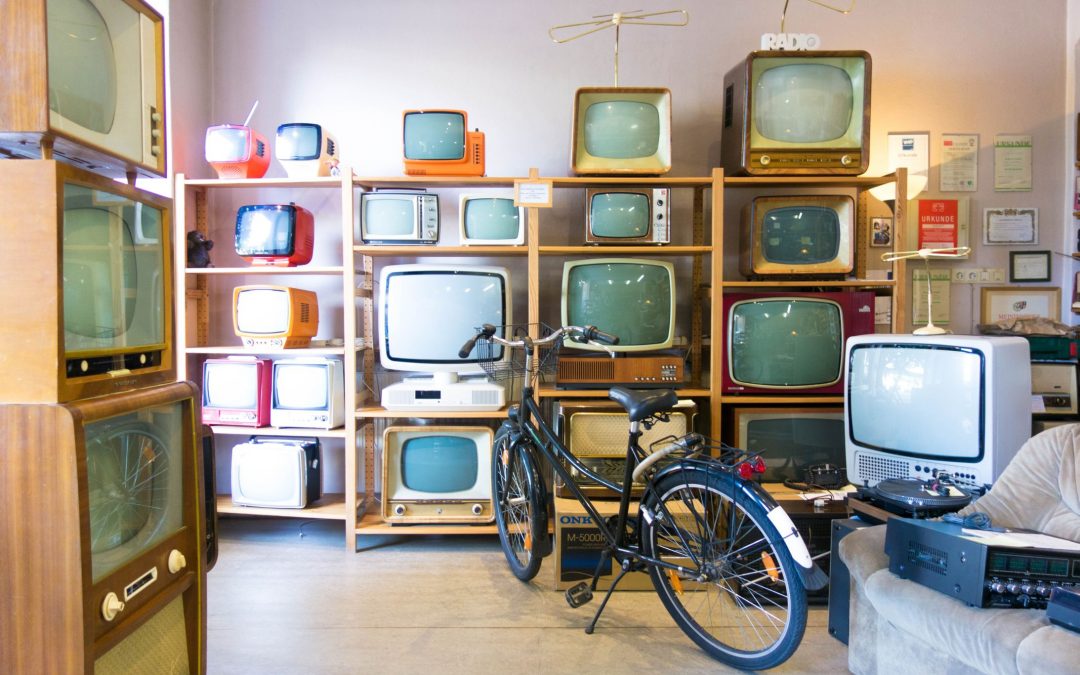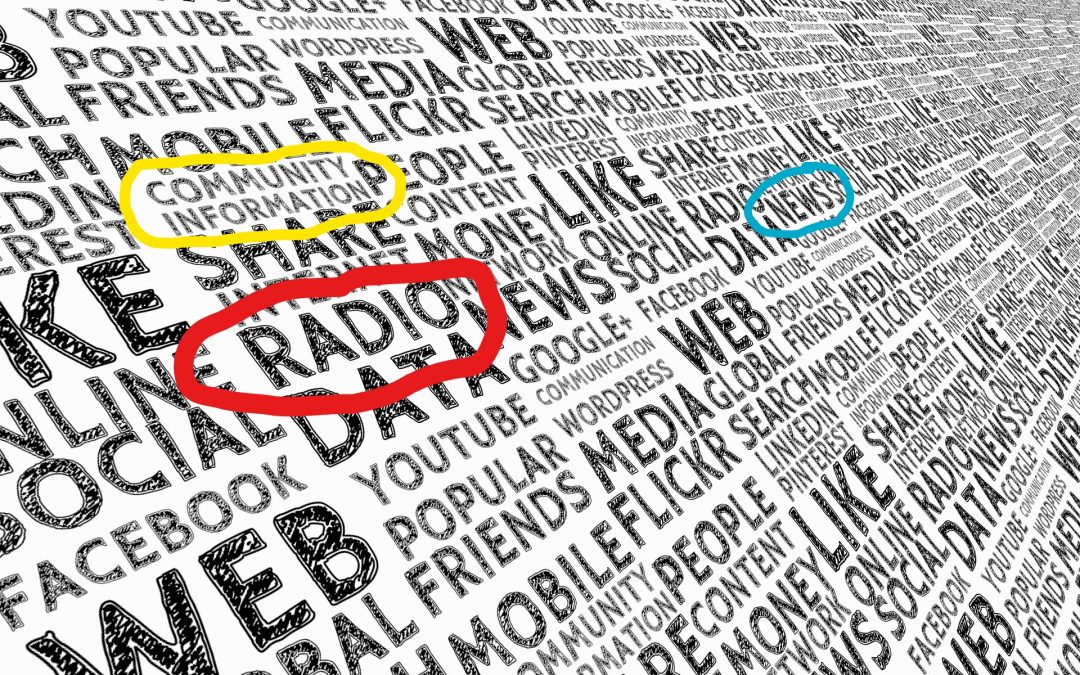
by Scott Howard | May 24, 2018 | Marketing and Advertising Insights, ScLoHo's Collective Wisdom, The Not-So-Secret Writings of ScLoHo, Uncategorized, WOWO Fort Wayne Radio Advertising with Scott Howard
As we head into the unofficial summer season of June, July and August, the three months between Memorial Day and Labor Day, I want to address a headline I saw again and give you an insiders perspective on The Decline of Mass Media.
Why talk about it now? Well, television viewing habits in years past were different during summer time, with the major networks showing summer reruns instead of new episodes. But hang on because I’m getting ahead of myself.
What is mass media anyway? Perhaps traditional media is a better term. Television, Radio, Newspapers and Magazines are the traditional media that have been the mainstay since the 1950’s and before.
Newspapers are continuing to struggle. Lay offs and shut downs have been occurring for nearly two decades, due to the rise of the internet. One story I read this month blamed the owners for cutting staffs.
The Denver Post cut the newsroom from 184 journalists to 99, according to the story. Other cuts at other newspapers were also harsh. 73 reporters down to 10 while another paper went 45 to 12 journalists. Locally in Fort Wayne, the afternoon paper ceased publication, and instead gets one sheet in the morning paper and an online edition. I saw friends of mine in the newspaper business in town leave either on their own or due to cutbacks. I was once tempted about 8 years ago to work for their online division but am grateful I stayed put.
The company I work, Federated Media sold the one newspaper they owned a couple years ago because it was nearly impossible to be profitable.
When I say the internet is the reason for the decline in print, it’s really a combination of things related to the internet.
Accessibility for one. 20 years ago most of us owned a desktop computer with a dial-up modem at home, if we had a home computer. 12 years ago laptops took over as the primary personal computer device. And did you realize that the first iPhone debuted in 2007, ushering in the smartphone revolution?
Online Content is the other contributing factor. No need to wait for the morning paper to check the weather or the score. Newspapers have tried to replace their dwindling subscriber numbers with paywall subscriptions, but the math doesn’t work. If you don’t have the readers, the advertisers will also go away and the decline has been going on for too long.
Declines in the magazine publishing industry are similar. What seems to have survived in print is specialized publications. Smaller but targeted readership than mass media.
Another way the internet has changed the media is the television industry. The New York Times featured a story that I read online about the future of broadcasting: Why Traditional TV Is in Trouble.
Here’s a few quotes:
Ratings are on the decline, especially among young people, some of whom don’t even own televisions. It’s hard to keep up with the many devices and apps people now use to watch shows. And there is a host of material from Silicon Valley that is competing for viewers’ attention, including Google’s YouTube, Facebook and Netflix. It all adds up to a precarious situation for broadcast TV.
Advertising on TV has long been the best way for marketers to reach a large number of people at one time. And it is still a formidable medium. But cracks are showing.
and:
The hottest shows on TV networks — which command the highest ad prices — are attracting older viewers, which is a challenge for brands that want to reach millennials and teens. For instance, this season’s top-rated show, the revival of “Roseanne,” has a median viewer age of 52.9 years. The network show with the lowest median age is “Riverdale” on the CW, at 37.2.
The TV networks will be able to survive by reinventing themselves much like radio stations did when television became a media force last century. But the local TV stations? My advice if you want to reach anyone younger than Baby Boomers, good luck. All of my kids are in their 30’s and none of them are watching broadcast TV, some don’t even own a television. They get their video content online. Even my wife and I watch just as much video content on something other than a TV or if we do, often it’s days later and the local ads are not even seen.

So what is taking the place of traditional broadcast TV as a mass media?
Netflix, Amazon Prime Video, YouTube, to name a few. Alternatives to cable like Sling, Hulu and Roku. These are all offering the best of both worlds for advertisers. You get to reach people watching video content but you get to target your ads to specific audiences, one of the technical marvels of the internet.
Here’s a quote from a newsletter I received from Google:
More than half of 18 to 49-year-olds in the U.S. either don’t watch a lot of TV or do not subscribe to TV. But that doesn’t mean TV content and TV screens are on their way out. In fact, the TV screen is the fastest growing screen for YouTube content, with 70% growth in the last two years.
Let me address the radio broadcasting industry too. It was the first broadcast mass media and WOWO radio, the station I work for is over 90 years old. There are two categories of traditional broadcast radio stations these days, and I’m not talking about AM and FM. The two categories I am referring to are talk based programming and music based programming.
Radio broadcasting started out with network radio shows from NBC, CBS, ABC and the Mutual Broadcasting System and eventually they evolved to what we have today.
In Fort Wayne, Indiana, there are 37 radio stations within close listening range. Some are duplicates of the same programming on different signals, like WOWO 1190 AM is the same as WOWO 107.5 FM, so let’s say there are 25 separate and individual choices. This is also a way of targeting your advertising. The best local radio stations keep an emphasis on local content, stuff you can’t get by listening to Spotify or Pandora.
Federated Media has 6 stations in Fort Wayne, four are music based, two are talk. I work for the talk stations, WOWO and our ESPN affiliated station. Both offer a combination of local and national programs. There are specific characteristics of WOWO listeners that help me determine if advertising on WOWO would be a good idea. Want to reach grown-ups? Let’s talk. Want to reach teenagers? I’ll connect you with someone who works for one of our music stations.
Not all radio stations and radio broadcasting companies are the same. Overall radio listenership has remained pretty steady for the past decade. Over 90% of everyone age 12 and older listens every week. However smart radio stations and companies are staying ahead of the trends that we see going on around us.
For years, radio stations like WOWO offered a way for you to listen via the internet. Go to WOWO.com and click on the listen now tab and you can stream WOWO on your computer. There are plenty of apps that offer access to radio stations like WOWO, and some people listen to WOWO via the WOWO app itself.
2018 however is the break thru year for Alexa and Google Home smart speaker systems. We are seeing a resurgence in radio listening simply by telling the smart speakers to play WOWO and poof, there’s Pat Miller in the afternoon or Charly Butcher in the morning, in your kitchen, just like 40 years ago when I was a kid and my parents had clock radios in their house.
One last way radio stations like WOWO are staying on top of the trends is podcasting. WOWO and our other Federated Media stations share both content from our live shows online in podcast form, but also we have some podcast only shows that are available via iTunes or what ever your favorite podcasting player is. Podcasting is huge and we can connect businesses to podcast listeners too.
The title of this today was The Decline Of Mass Media. As I’ve laid out what’s going on in print and broadcasting in response to the web connected world we live in, I hope you see as I do, these are exciting times. The traditional mass medias that are adapting are going to done fine while the others struggle and will be a mere shadow of their former selves.
Fortunately, I get to work with a company that continues to be on the leading edge and I get to offer advertising and marketing solutions that work using WOWO radio and our digital marketing division of Federated Media.
Want to see how I can help your business grow this year and next? Contact me.
One final piece that I’m going to share because it was posted on LinkedIn by Ben Saurer, WOWO radio’s General Sales Manager that demonstrates how WOWO truly is a leader. Ben’s job is to hire, coach and lead an advertising sales team. Quite frankly, most media companies struggle with this, but as you will see, WOWO is different, in a good way. Here’s what an excerpt from what Ben wrote:
All my people earn above the industry average. Client retention is high. Everyone on my staff is generating more revenue than last year. We’ve had ZERO sales staff turnover in 2+ years while having our market’s largest sales staff. People perform and like working here.
Remember the story I shared about the newspapers cutting their staffs to try and save themselves from going under? Completely different story here at WOWO.

by Scott Howard | May 16, 2018 | Marketing and Advertising Insights, The Not-So-Secret Writings of ScLoHo, WOWO Fort Wayne Radio Advertising with Scott Howard
Return On Investment is a common term, but often I run into business owners who have no idea that they can calculate a Return On Your Advertising Investment. Do you know how to do this?
First of all, I’m not going to assume that you know what Return On Investment means. In a world filled with lingo, Return On Investment is also know as R.O.I.
Return On Investment is a simple math formula. In simple terms, if I give you $100, and a year later you give me back $105, I had a 5% Return On Investment. The $100 plus 5 bucks.
In the business world, the profit margins and mark-ups percents are the terms that business owners I talk with usually know off the top of their heads, which is important too.
If a business owner buys an item at $100 and sells it for $200, then his mark-up is 100% and profit margin is 50%.
Keep in mind that I’m only talking about the gross dollars, not net dollars.
Net Dollars are what you end up with after paying for everything, like taxes, wages, the electric bill and everything else. Most businesses set themselves up to not have any money left over, which is fine. I’m not an accountant or tax attorney so we’ll leave that alone today.
So let’s dig into this concept of a Return On Your Advertising Investment.
Step back and think about why you need to advertise in the first place. It’s a real simple concept.
You advertise to bring in paying customers. That’s it in 7 words. I’ll say it again:
You advertise to bring in paying customers.
Why? Because without paying customers, you will go out of business.
But some folks look at advertising as an expense and do as little as possible. Their businesses also grow as little as possible.
Others look at advertising as an investment and realize that the more they spend the more they get back.
A few years ago, the marketing research firm, Nielsen did an in-depth study of nearly a dozen brands and companies to determine the outcome and results of advertising. They compared ads on radio, on television and online advertising.
The results showed that the average Return On Advertising Investment for Radio is double that of online ads and also twice as good as television advertising.
Brands averaged a sales lift of more than $6 for every $1 spent on radio ads.
And…
One retail brand delivered an almost unheard of $23.21 in sales lift for every $1 invested.
Warren Buffet would love to have a 6 to 1 return on his investments.
I’m going to wrap this up with a story from a conversation I had recently with a new business owner.
Paul instantly knew his mark-up and profit margins when I asked him, but was surprised to see how easily it would be to make money on a $2000 monthly advertising investment. Just one or two jobs each month for his business would make him money above and beyond his advertising expense.
Return On Your Advertising Investment is a subject you need to know about and I can help.
Let’s talk!

by Scott Howard | Dec 26, 2017 | Marketing and Advertising Insights, ScLoHo's Collective Wisdom, ScLoHo's Media, The Not-So-Secret Writings of ScLoHo
TV Audiences Are Shrinking was the title of a story I wrote a decade ago, and unfortunately, the major television broadcast networks are still getting clobbered.
There was hope for some Television folks that in the age of cord cutting, as people dropped their cable TV subscription and started watching channels over the air, like “the good old days” that ABC, CBS, NBC and FOX would see an increase in viewership.
But not so fast…
Many of the cord cutters are not watching the traditional TV networks, some don’t even have a TV like my son and his wife. Netflix and Hulu have been making gains. meanwhile according to a story from Mediapost last week:
…in prime time, broadcast networks were down 16% (to 8.3 million); and cable networks, lost 11% (to 15.5 million).
To my business owner and marketing manager friends who are wondering why your television ad campaigns have been struggling… this could be a factor.
I have a few suggestions, if you want to talk…

by Scott Howard | Sep 13, 2017 | Marketing and Advertising Insights, ScLoHo's Fort Wayne, ScLoHo's Media, The Not-So-Secret Writings of ScLoHo, WOWO Fort Wayne Radio Advertising with Scott Howard
NewsTalk 1190 WOWO Radio in Fort Wayne, Indiana is going to be 100 years old soon. Despite the most recent doomsday report that AM and FM radio stations would be obsolete before WOWO hits 100, I’m here to present some real reasons that the report is both right and wrong.
Broadcast radio is struggling to remain relevant as consumers embrace streaming platforms, according to a groundbreaking study that examines the disruption to radio caused by digital services.
These trends are crippling radio, which is witnessing historic declines in its audience and its relevance to listeners and advertisers. To survive, radio must innovate, learn from other media, and take control of its path forward into the third decade of this century and beyond.
That’s the intro to a 30 page report that says radio stations like the ones I work for are going the way of the phone book. Here’s a direct link to the entire report if you want to really dig in.
A dozen years ago, I was making the same prediction. Music radio was going to be a thing of the past. At the time I worked with legendary Fort Wayne WXKE Radio Icon Doc West and Doc knew the answer to the problem of music radio stations losing listeners to streaming services and satellite radio stations. Live and Locally Relevant. That was the mantra that Doc used to stay at the top of the heap of radio personalities back then.
WOWO radio used to be a music station when I was a kid and the most listened to radio personality before Doc West was Bob Sievers. His morning program on WOWO had 90% of the available audience tuned in. Farmers for the farm reports, kids like me, waiting to hear the weather, well, actually the school closings and everyone else listened to Bob on WOWO to know what was going on. Bob and WOWO were Live and Locally Relevant.
My reason for predicting the demise of AM & FM radio back then was the digital age as auto manufacturers were adding internet to their vehicles. More options for drivers to listen to their favorite music. I knew it would be an evolving change, simply because it would take time for these internet connected cars to replace the older vehicles.

Your Car, a “radio on wheels”
But then something else has kicked in that I didn’t foresee. The Internet of Things.
The IoT as it is called is the interconnection of stuff via the web that we didn’t need to have connected to the web previously.
The ability for your phone to respond to voice commands was a preview of what we have now with Alexa and the other digital personal assistant devices that are becoming common place.
But back to my headline for this story:
Why WOWO Radio Will Outlast The Naysayers
WOWO radio and our sister stations at Federated Media are embracing the digital age. They were the first in Fort Wayne to jump in and offer the radio programming to listeners on what ever digital platform the listeners wanted. Then they went a step further and began producing content that goes beyond what you can get by listening to the AM & FM radio signals. Podcasts, Videos, and plenty of on-demand content that you and I can read, watch or listen to when we want, where we want.

Listen to what you want, when you want
Our music stations, in Fort Wayne including WMEE, K-105 and 98.9 The Bear have been Live and Locally Relevant for decades! WOWO Radio with our News and Talk format for the past 20 years has a couple of national talk shows in the middle of the day, but every 30 minutes, we have Live and Locally Relevant news updates. Fort Wayne’s Morning News with Charly Butcher starts the weekday and afternoons with the Pat Miller Program, bookend each weekday with Live and Locally Relevant programming.
In case you still need another antidote as to the importance of local media, during tragic events like Hurricane Harvey, it was the local Texas radio stations that were the dominate source of information. Television isn’t portable but radio is.
But what about the radio audience overall? Is it shrinking?
After the report from the naysayer, two more reports came out to counter his claims. You can read them here and here.
But what I care about and so do the businesses I work with who use WOWO Radio to advertise by inviting our listeners to become their customers, is what is the state of radio listenership in Fort Wayne Indiana?
I researched it for this story. I have access to the Eastlan radio surveys from 2013 thru today that measures radio listener habits every 6 months in Fort Wayne.
Between 2013 and 2017, the total number of people age 12 and older who listen to a radio station in Metro Fort Wayne has grown by 25,000.
Boom.
Mic Drop.
396,000 weekly listeners in the spring of 2013.
421,000 weekly listeners in the spring of 2017.
How’s WOWO doing? Every survey that I have access to (including before 2013) show that WOWO radio continues to lead the pack with over 100,000 listeners every week, and 98%+ are grown ups.
In about 8 or 9 years WOWO will be celebrating a century of service. Now is the right time to join the other advertising partners who benefit from being on WOWO. Contact me to find out how.

by Scott Howard | Sep 5, 2017 | Marketing and Advertising Insights, ScLoHo's Fort Wayne, ScLoHo's Media, The Not-So-Secret Writings of ScLoHo, WOWO Fort Wayne Radio Advertising with Scott Howard
Where do you get your local news? Is traditional media dead yet?
These two questions have been on my mind for quite awhile and then last month we learned that a Fort Wayne news institution was making a major change:
The News-Sentinel is ending distribution of its afternoon newspaper as it shifts to a digital platform, Fort Wayne Newspapers announced.
Subscribers will still be offered News-Sentinel content in the morning Journal Gazette, as part of a renewal of the two newspapers’ joint operating agreement.
I wasn’t surprised, but I was saddened. In my youth, I was a paperboy of the afternoon paper in Fort Wayne and had a fondness for the paper even though it has been years since I bought one.
The survival of two local daily newspapers in a city the size of Fort Wayne was only due to some planning decades ago that allowed the morning and afternoon newspapers that were independently owned to form a Joint Operating Agreement. This J.O.A. was limited to advertising revenue and kept the news and editorial staffs separate for each paper.
For the past dozen years, I have had access to publication numbers of the two newspapers because of my affiliation with the Radio Advertising Bureau and their access to the numbers reported to the Audit Bureau of Circulations that keeps track of this data.
In 1999, the afternoon paper had over 45,000 subscribers, and that number was in the 20 thousand range 10 years later. The last report I have access to listed a total of 12,000 weekly subscribers to the News-Sentinel back in 2014 and odds are they were less than 10 thousand last week.
This is not just a local phenomenon. The decline of printed daily newspaper circulation has been going on for decades with alternatives popping up online. Many papers moved their content online and used those numbers to boost their subscription numbers that they would report, but the revenue didn’t match up.
A few years ago, I had coffee with a young woman who was in charge of selling digital advertising for the Fort Wayne Newspapers and I remember my advice:
Your job is going to be to keep advertisers spending levels where they are today. The businesses are going to decrease their spending in the printed paper and you can help them stay by migrating those funds into digital products.
I laid out a 5 year plan and at the end of those 5 years, 90% of an advertisers budget was being spent in digital media with the remaining 10% on a souvenir collectors edition of the printed newspaper. She wasn’t allowed to follow my advice and now she works elsewhere.
A couple years later, after I was interviewed to become the Digital Advertising Sales Manager for the Fort Wayne Newspapers they decided to eliminate the position and combine the sales departments of both digital and print.
So where do we as consumers get our news? I still see people reading the morning paper in Fort Wayne on the days I visit a coffee shop. But those numbers have been declining too.
Fort Wayne has over 20 radio stations and a number of TV stations. The television stations that offer local news include a CBS, ABC, NBC and Fox affiliate. According to the ratings, the CBS station has double the audience for local news over the ABC station and the NBC stations audience didn’t hardly register in the latest survey. The Fox station has one newscast at a time that no one else does (10 pm).
On the radio side, WOWO Radio is the only station with a fully staffed full time news staff that does live local news every 30 minutes from 5am until 6pm weekdays, and more frequently between 5 and 9am. Yes, there are other stations that offer local news, but not all day and not to the degree that WOWO does. WOWO has additional news sources and providers in neighboring communities from our co-owned stations in Warsaw, Elkhart, South Bend and Goshen along with “news-partners” at local print and TV stations.
Long ago, WOWO’s news slogan was, “Where you go when you need to know”, and as a News Talk formatted radio station for over 20 years, the commitment remains. WOWO recognized that where we get out news continues to evolve. Nearly every local news story is found on WOWO.com.
News and Weather alerts are sent via text to subscribers. Updates on Facebook and Twitter are posted online too. WOWO is owned by Federated Media and WOWO supplies the news to our sister stations in Fort Wayne including WMEE, 98.9 The Bear & K-105.
Having worked for a couple of the other radio station groups, they simply don’t have a news department like WOWO & Federated Media. When I was there, it was more like grab the morning newspaper and pull a couple of headlines to rewrite and call it a newscast, style of news. And to be fair, there are two radio stations on the non-profit part of the FM dial that have news departments of varying degrees.
News is not the only reason we have traditional media. My original two questions when I started this were:
Where do you get your local news? Is traditional media dead yet?
Individual TV shows on the major broadcast networks can still find a healthy sized audience, but those networks are not filling all their prime time weekly slots with new shows. Lot’s of repeats will air on Friday and Saturday nights, I’ve observed. Broadcast TV is trying to adjust to the on-demand world of entertainment we have now.
Music radio stations have been battling alternatives for decades and usually are still winning if they are locally connected to their listeners and their community. The Radio Advertising Bureau still tells us that over 90% of folks age 13 and older listen to a radio station every week.
From a business standpoint, you as a business person need to understand that there are still some very valuable traditional media sources that you can use to advertise with. It’s just not the same as it was 30 years ago or even 10 years ago and it may require someone to help guide you to make smart decisions on where to advertise.
That’s where I can help. I make recommendations beyond what I can sell to you myself, when I see an opportunity that you should take advantage of. Want help? Let’s talk.








